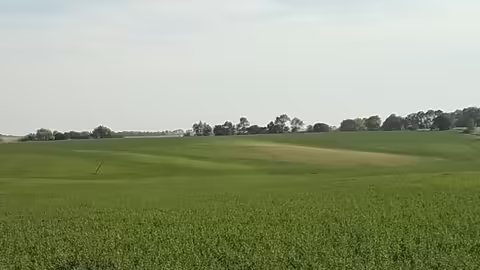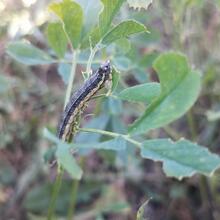Freeport, ILL [October 1, 2021]—The extended summer-like weather has given Fall armyworms the opportunity to continue marching north from the southern states. While it isn’t unusual to see them in the fall, conditions created the perfect storm for larger numbers to migrate north sooner than usual. University of Illinois Extension staff have been following the movement north over the last few months.
“Fall armyworms are usually seen in some capacity every year,” explains Commercial Agriculture Educator Phillip Alberti. “It’s definitely something for farmers to be on the lookout for right now.” While the preferred environment for Fall armyworms is alfalfa and hay fields, they can be found in corn and soybean fields. They have even been reported wreaking havoc in lawns.
These devastating pests have reached northern Illinois over the last few weeks. Stephenson County Dairy Farmer, Lorilee Schultz is currently battling them in her alfalfa fields. “Armyworms aren’t normally on my radar this time of year,” says Schultz. “Luckily my neighbors told me they were having issues with them, so I was able to check my fields right away. They still managed to do quite a bit of damage quickly.”
“Often a hayfield will look like drought-stress with patchy, discolored areas,” describes Alberti. “When scouting for armyworms, it’s important to go during the cooler parts of the day, morning and evening, when activity is the highest.”
In Schultz’s field, the damage was apparent within a day. “You can see light green to brown spots throughout the field. This field is only 3-4 years old, I was hoping to get another good year out of it before having to replant the alfalfa crop,” says Schultz. “I’m worried about how well the field will winter and what impact this will have on next year’s forage quality and quantity.”
Fall armyworms (Spodoptera frugiperda) do the most damage as caterpillars. During this 14 to 22-day stage of their life circle, they do the most damage to crops, feeding off the leafy, tender greens. After feeding and growing to approx. 1.5 inches long, the caterpillars burrow into the ground and enter the pupal stage. Within about 10 days, a moth emerges. On average, the female moth will live 10 days and deposit up to 2,000 eggs. A few days later, small caterpillars will hatch from the eggs. The life cycle lasts four weeks.
Caterpillars start as a green color and change to brown and then black as they mature and have white or yellow lines running from head to tail. There is also a characteristic inverted “Y” shape between the eyes and four dark dots on the top of the eighth segment, near the tail-end. Moths are generally gray in color with a 1.5-inch wingspan.
“There aren’t too many control options for armyworms this late in the season,” says Alberti. “You need to pay attention to regulations and timing if you choose to use a spray insecticide. Be sure to follow the label and use university recommendations to make economical spray decisions. Alberti adds, “The other option is to cut your crop earlier to reduce the severity of losses. However, coming into late fall, with not much growing season left, cutting alfalfa now may make it difficult for plants to grow and store enough nutrients to sustain through the winter months.”
For more information about armyworms or other agricultural questions, contact University of Illinois Extension office-Stephenson County by phone: 815-235-4125, email: uie-jsw@illinois.edu or by visiting go.illinois.edu/jsw.

